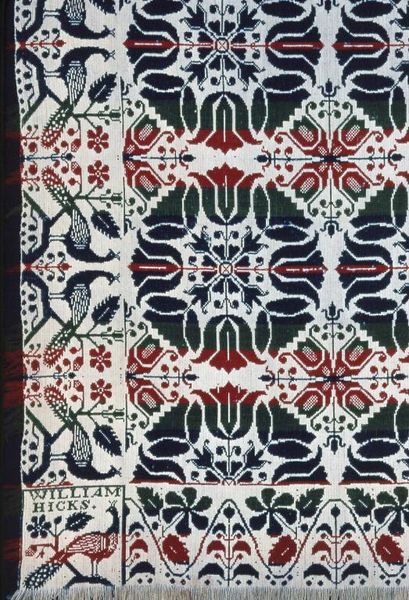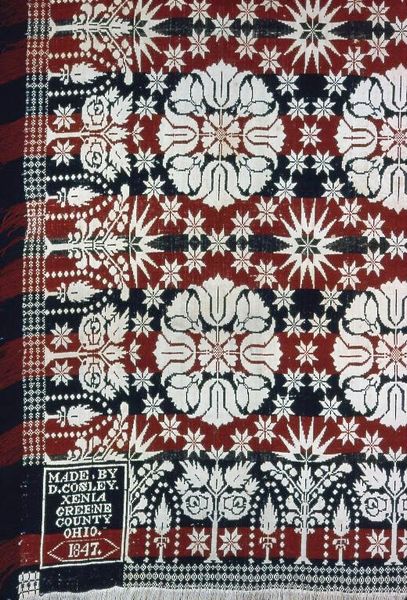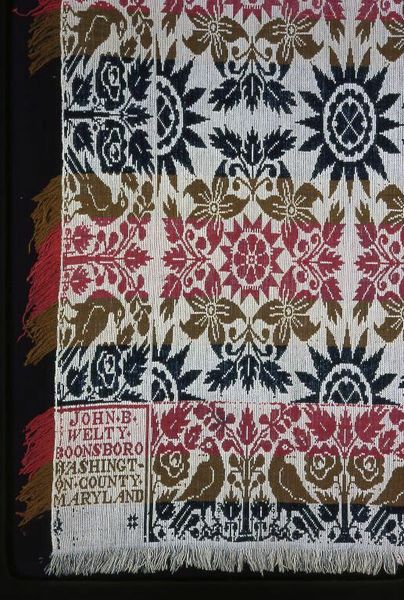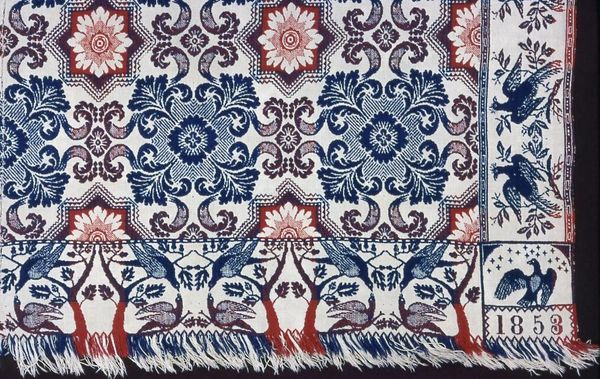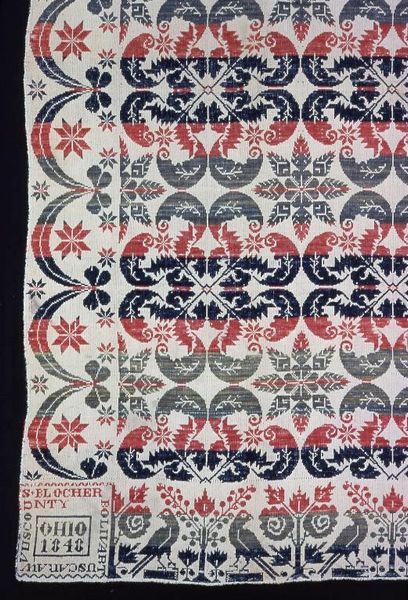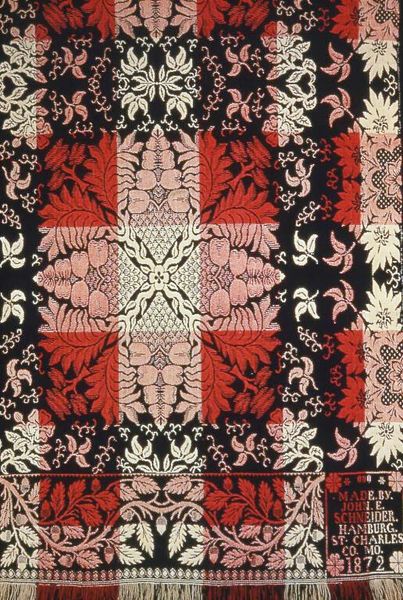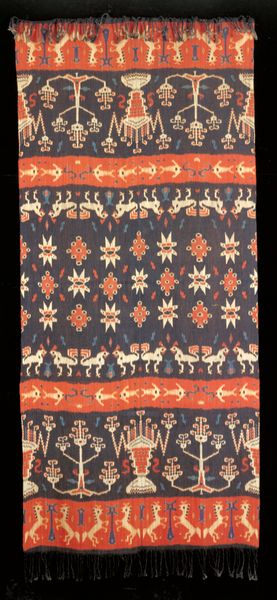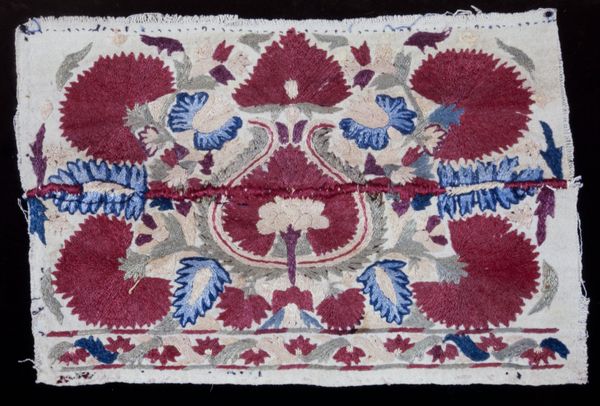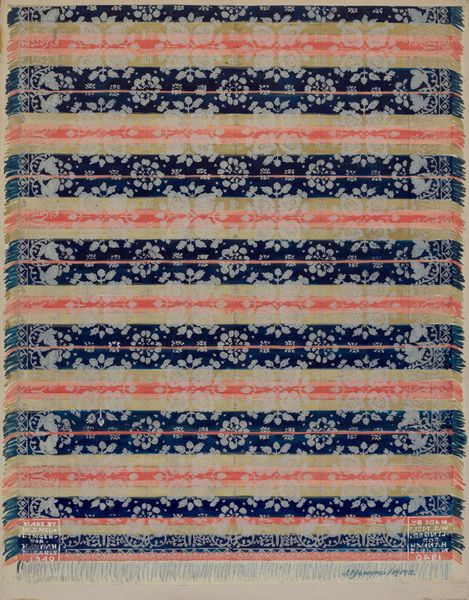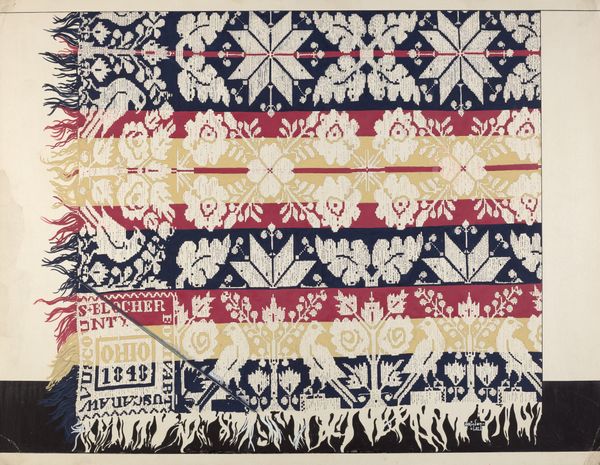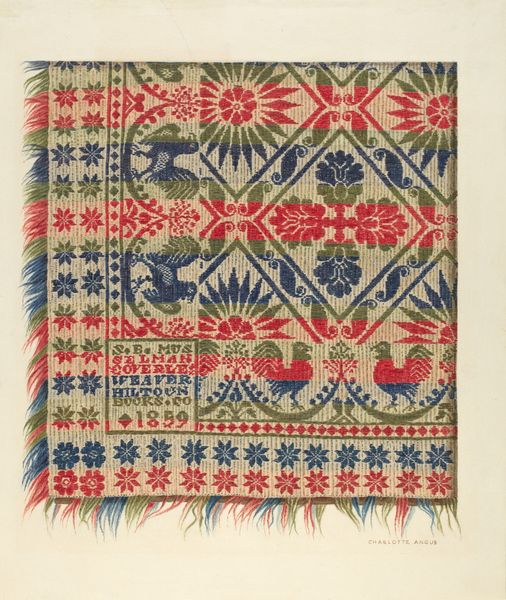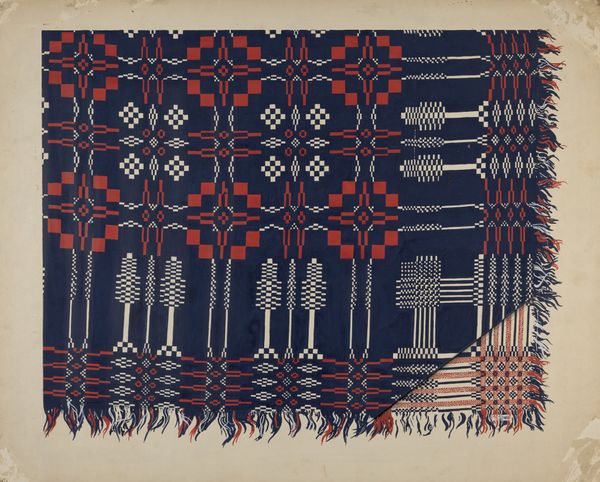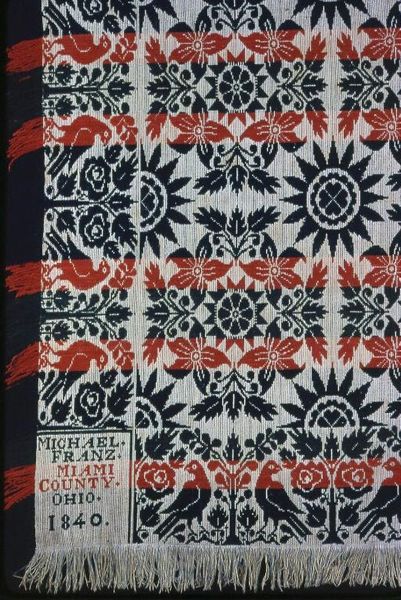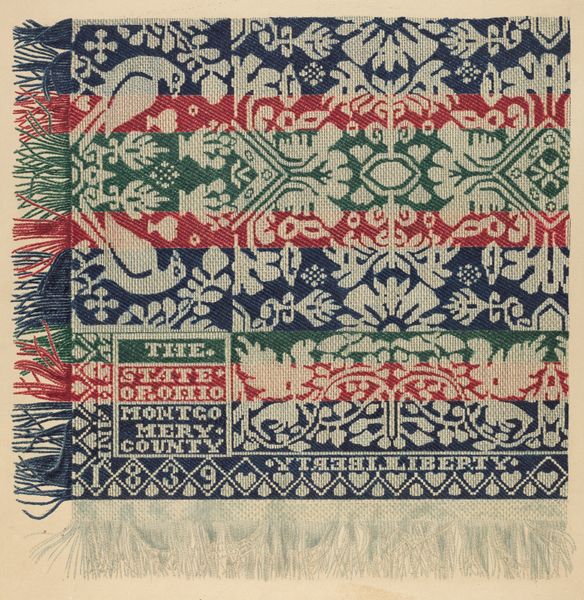
weaving, textile
#
weaving
#
textile
#
folk-art
#
geometric
#
decorative-art
Dimensions: 233.5 × 193.7 cm (101 7/8 × 76 1/4 in.) Repeat: 40 × 35.5 cm (15 3/4 × 14 in.)
Copyright: Public Domain
Editor: So, this is the "Coverlet" by John Wunterlich, created in 1857. It's a woven textile piece held at the Art Institute of Chicago. What first strikes me is the bold, geometric design. It feels almost like a quilt, but with a different kind of intricacy. How do you read this piece, especially knowing its historical context? Curator: This coverlet sings of home and hearth, doesn’t it? Think of Wunterlich, a name now whispered by history, carefully setting up his loom. Each thread placed, each motif chosen was a deliberate act. Those repeating stars and stylized flora? More than just decoration, I suspect they were symbols… maybe of hope, maybe of remembrance for a world left behind in Europe. Editor: Remembrance? What makes you say that? Curator: Well, weaving like this was often a way for immigrant communities, particularly German immigrants in Ohio, to maintain traditions in a new landscape. Did creating such a large and patterned work carry an element of story-telling about values? Editor: That's a perspective I hadn't considered. It really does speak to this sense of bringing the old world into the new. Curator: Absolutely! And note those stylized birds along the border—they’re not botanically accurate. More like joyful imaginings of nature, maybe? Folk art gives license for dreams that history often leaves aside, wouldn’t you agree? Editor: Yes, and I think looking at it as a repository for memory really enriches the piece, it almost makes it more "alive". Curator: I concur! Now, when you leave here today, think of other seemingly “humble” objects from the past as carrying hidden stories in their threads.
Comments
No comments
Be the first to comment and join the conversation on the ultimate creative platform.
